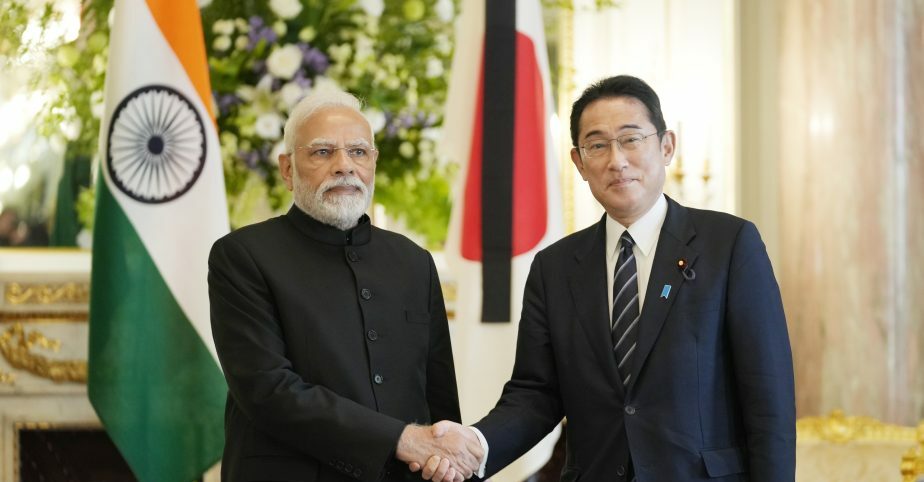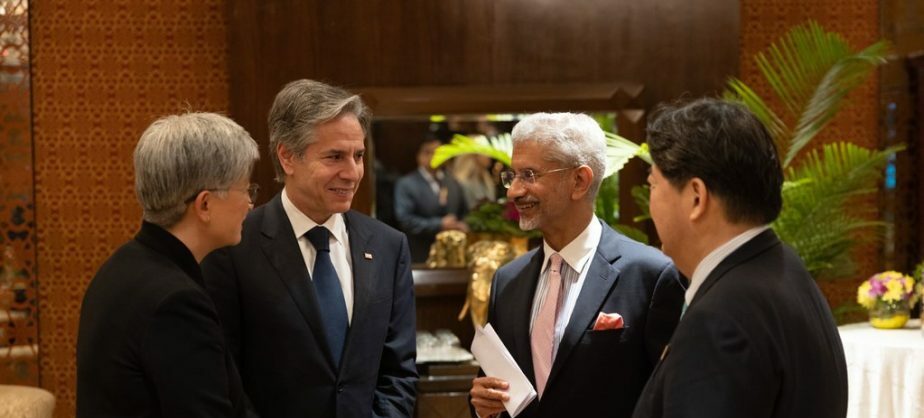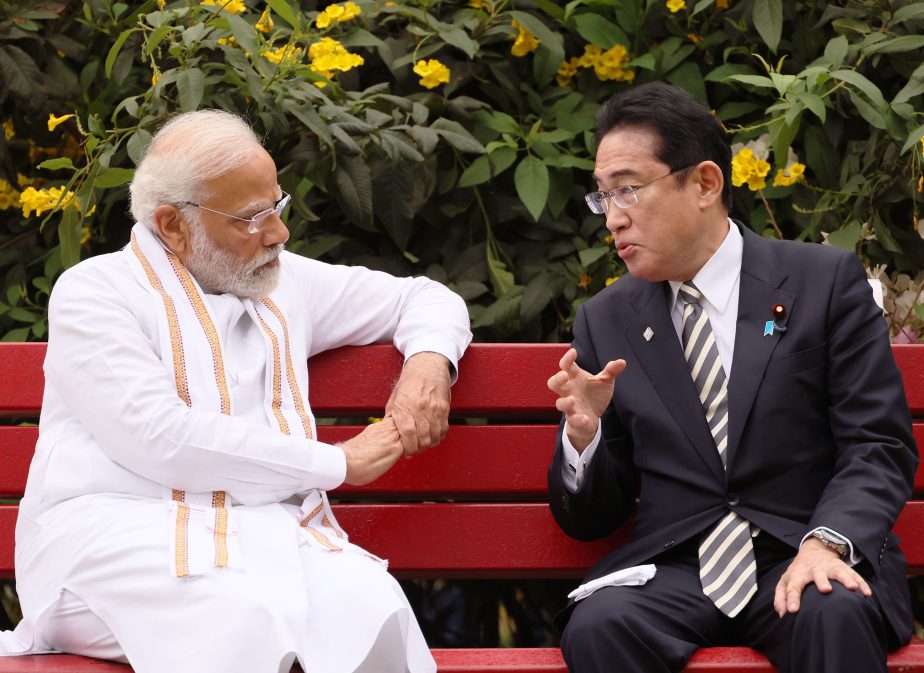Veer Guardian 2023: Maiden India-Japan Air Exercise to Begin
THE DIPLOMAT
APLN member Rajeswari Pillai Rajagopalan writes on Veer Guardian 2023: the upcoming maiden India-Japan air exercise. She argues that despite differences of opinion on some issues, including the Russian invasion of Ukraine, the India-Japan partnership is likely to gain momentum, thanks to China. Read the original article here.
India and Japan are set to hold their maiden air exercise from January 12-26. This is the first time that the Indian Air Force and Japanese Air Self Defense Forces will be exercising together. The exercise, Veer Guardian 2023, will take place at Hyakuri Air Base, Japan.
The Indian side will be led by Sukhoi-30MKI Squadron Leader Avni Chaturvedi. This is reportedly the first time that a female fighter pilot will be leading the Indian fighter squadron in a bilateral exercise with a foreign partner. The Indian contingent will see the participation of four Su-30 MKI, two C-17, and one IL-78 aircraft, whereas the Japanese side will be represented by four F-2s (a Japanese development of the U.S.-built F-16 fighter) and four F-15 aircraft.
The air exercise is meant to augment air defense cooperation between the two sides. A statement from the Indian Ministry of Defense said that the bilateral air exercise will include “the conduct of various aerial combat drills between the two Air Forces… multi-domain air combat missions in a complex environment and will exchange best practices.” The statement added that the exercise “will fortify the long standing bond of friendship and enhance the avenues of defense cooperation between the two Air Forces.”
The exercise is in line with the statement issued after the 2+2 dialogue involving foreign and defense ministers of the two countries, where the two sides noted “the substantial expansion of Japan-India security and defense cooperation, and concurred to continue to conduct bilateral and multilateral exercises in a multilayered manner.” These are also in line with objective of the free and open Indo-Pacific vision, free from coercion, shared by India and Japan on multiple occasions including at the last summit meeting between Prime Ministers Narendra Modi and his Japanese counterpart Kishida Fumio in 2022.
Shared Indian and Japanese concerns over Chinese aggression, Beijing’s growing footprint in the Indian and Pacific Oceans, and its threats to supply chains have brought New Delhi and Tokyo onto the same strategic page. This has been particularly so in the last three years with India and China locked in a border confrontation in Galwan, Ladakh. That Modi met Kishida twice last year for leader-level meetings reflects this growing strategic convergence and the new sense of purpose in the relationship.
Despite their differences on some issues, including the Russian invasion of Ukraine, the India-Japan relationship is likely to stay the course and gain momentum, thanks to China. This will include defense and security cooperation, as well as cooperation on economic security and supply chain related issues. Reflecting the new importance of economic security in Japan’s thinking, the two leaders in March 2022 stated that their two economies will be driven by “robust bilateral investment and trade flows through diversified, resilient, transparent, open, secure and predictable global supply chains that provide for economic security and prosperity of their peoples.” Modi has made similar assertions at the Summit on Global Supply Chain Resilience when he stated that “3Ts – Trusted Source, Transparency and Time frame” as critical for improved global supply chains.
India and Japan have deepened their security and political consultations as well as the number of annual exercises involving their armed forces. The air exercise comes against the backdrop of other bilateral exercises between the two sides. The two sides conducted Exercise Dharma Guardian-2022 between the two armies at Foreign Training Node, Belgaum, in southern India. According to a statement issued by the Indian Ministry of Defense, “Both contingents not only shared their expertise on contemporary subjects of counter terrorism operations, but also utilized this opportunity to share their experiences on exploiting disruptive technologies like Drone and Anti-Drone weapons.”
In September, the two navies were engaged in the 6th edition of their annual maritime exercise, JIMEX 22 in the Bay of Bengal. The Indian Ministry of Defense said this year’s edition included “some of the most complex exercises undertaken jointly by the two navies,” engaging in “advanced level anti-submarine warfare, weapon firings and Air Defense exercises.” The exercise saw the participation of shipborne helicopters, fighter aircraft, and submarines.
In November, the two countries came together in the multilateral Malabar exercise, which also included the participation of Australia, and the United States. According to the Indian Ministry of Defense, the sea phase of the exercise involved “live weapon firings, surface, anti-air and anti-submarine warfare drills, and tactical procedures,” and also “enabled all four navies to consolidate interoperability and hone their tactical skills.”
In addition to the joint military exercises, the two sides also have intensified political consultations and security dialogues. In September, for instance, an Indian Coast Guard team led by its Director General visited Tokyo for the 20th iteration of the high-level meeting between the two coast guards. As mentioned earlier, also in September, the two countries held 2+2 ministerial meetings involving the defense and foreign ministers.
After Abe Shinzo’s untimely passing last year, there was some apprehension that India-Japan relations could slow down, but Kishida and Modi appear to have struck the right chord, despite disagreements over the Russian invasion of Ukraine. All of India’s new security partners are united in imposing tough sanctions on Russia and voting against Russia in the United Nations. India is yet to do so and has preferred abstaining on the U.N. votes because India is uncomfortable calling out Russia by name. While this could have become an issue, at least for the time being, the China factor has steadied the India-Japan strategic partnership. Given that China continues to be a belligerent force in the Indo-Pacific and beyond, India and Japan will continue to aim for greater strategic and military coordination, interoperability, and readiness to face any contingency.
Image: Indian Prime Minister Narendra Modi, left, poses for a photo with Japanese Prime Minister Fumio Kishida before their meeting at the Akasaka Palace state guest house in Tokyo, Tuesday, Sept. 27, 2022. Credit: AP Photo/Hiro Komae, Pool




